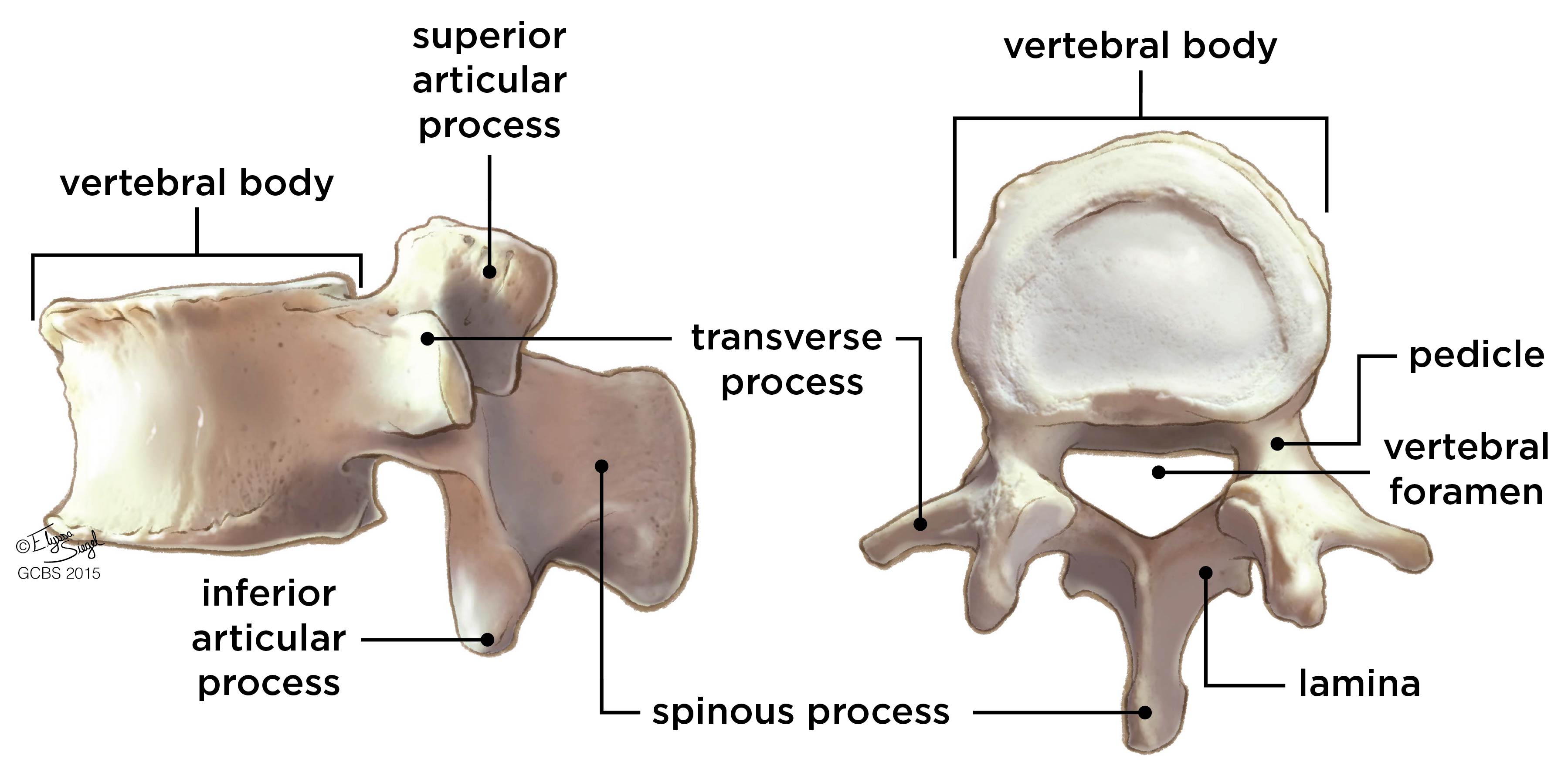
Spinal Anatomy James Langdon
The vertebral column, also known as the spinal column, is a flexible column that encloses the spinal cord and also supports the head. It consists of various groups of vertebrae and is.
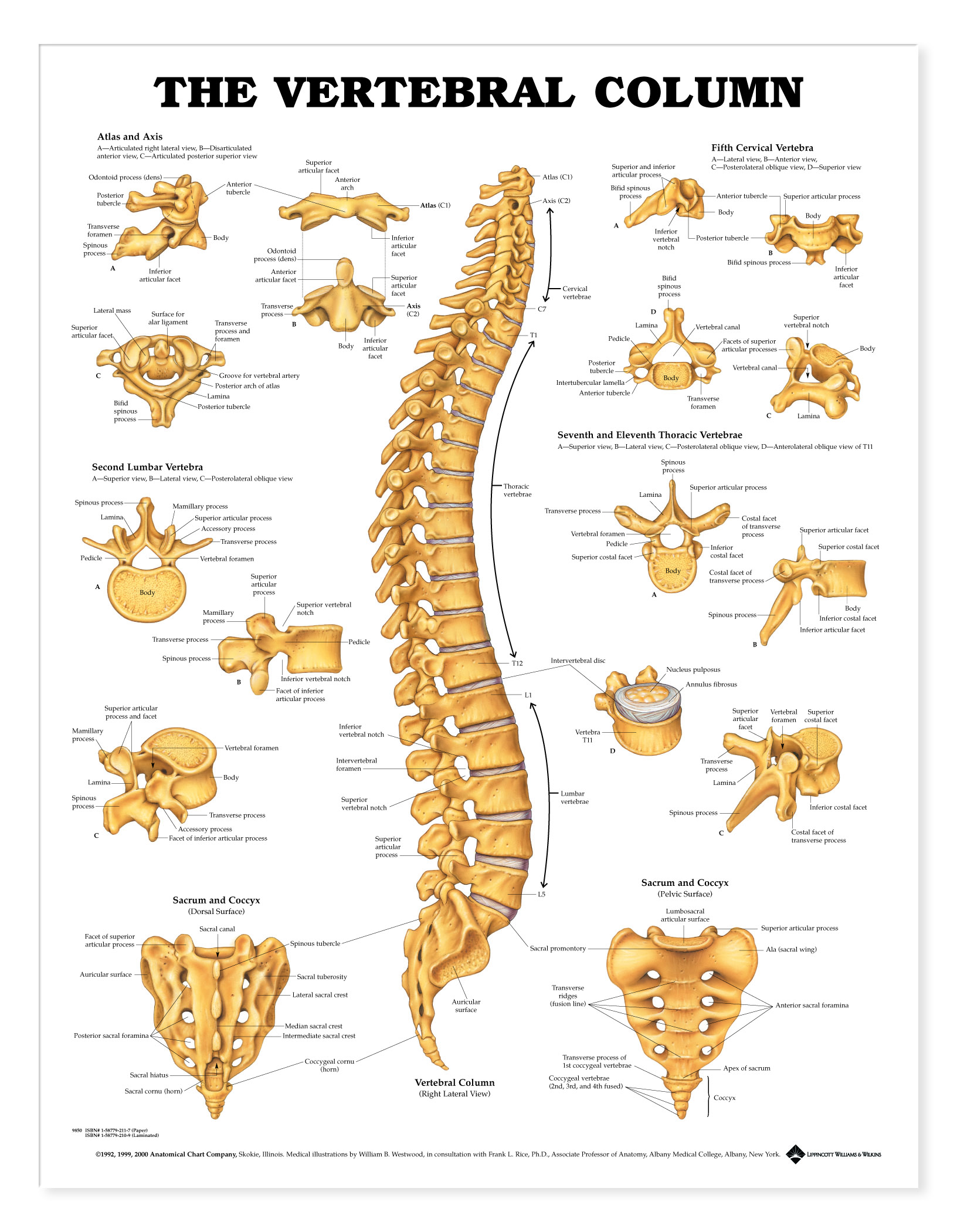
Vertebral Column Vertebral Column Labelled
Markings of the Lumbar Vertebrae: The body or centrum ( Corpus vertebrae) is a large, sturdy, cylindrical mass on the anterior side of the vertebra. It articulates with the vertebral bodies above and below and is designed to withstand vertical compression. [ superior view / Lateral view] Body of the lumbar vertebra - Superior and lateral views 1 2

human vertebral column (lateral view). Bio sciences, Column design, Human
Describe the structure of an intervertebral disc Determine the location of the ligaments that provide support for the vertebral column The vertebral column is also known as the spinal column or spine ( Figure 7.20 ). It consists of a sequence of vertebrae (singular = vertebra), each of which is separated and united by an intervertebral disc.

Major components of a typical vertebrae and the vertebral canal. Medical anatomy, Human
It is a flexible column that supports the head, neck, and body and allows for their movements. It also protects the spinal cord, which passes through openings in the vertebrae. Figure 7.4.1 - Vertebral Column: The adult vertebral column consists of 24 vertebrae, plus the fused vertebrae of the sacrum and coccyx.

Vertebrae Anatomy and Functions with Diagram
Figure 1. Vertebral Column. The adult vertebral column consists of 24 vertebrae, plus the sacrum and coccyx. The vertebrae are divided into three regions: cervical C1-C7 vertebrae, thoracic T1-T12 vertebrae, and lumbar L1-L5 vertebrae.

Structure of a Typical Vertebra Diagram Quizlet
The spinal column (or vertebral column) extends from the skull to the pelvis and is made up of 33 individual bones termed vertebrae. The vertebrae are stacked on top of each other group into four.

Notes on Anatomy and Physiology The Vertebrae
Spine Structure and Function. Your spine is an important bone structure that supports your body and helps you walk, twist and move. Your spine is made up of vertebrae (bones), disks, joints, soft tissues, nerves and your spinal cord. Exercises can strengthen the core muscles that support your spine and prevent back injuries and pain.

vertebral column Anatomy & Function Britannica
Certain vertebrae that appear either at the extremity of the entire vertebrae column, e.g., , , or at the transition regions of different vertebral sections, e.g., , have much better distinguishable characteristics (red ones in Fig. 2 a). The identification of these vertebrae helps in the labeling of others, and are defined as " anchor vertebrae ".

vertebrae labeled 744×1278 Anatomy System Human Body Anatomy diagram and chart images
The body is what allows the vertebrae in the vertebral column to be stacked upon one another, separated by pads of fibrocartilage called the intervertebral discs. The lower you go in the vertebral column, the larger the vertebrae's bodies become. Two branches off of the body, known as pedicles, connect with two other branches, known as.
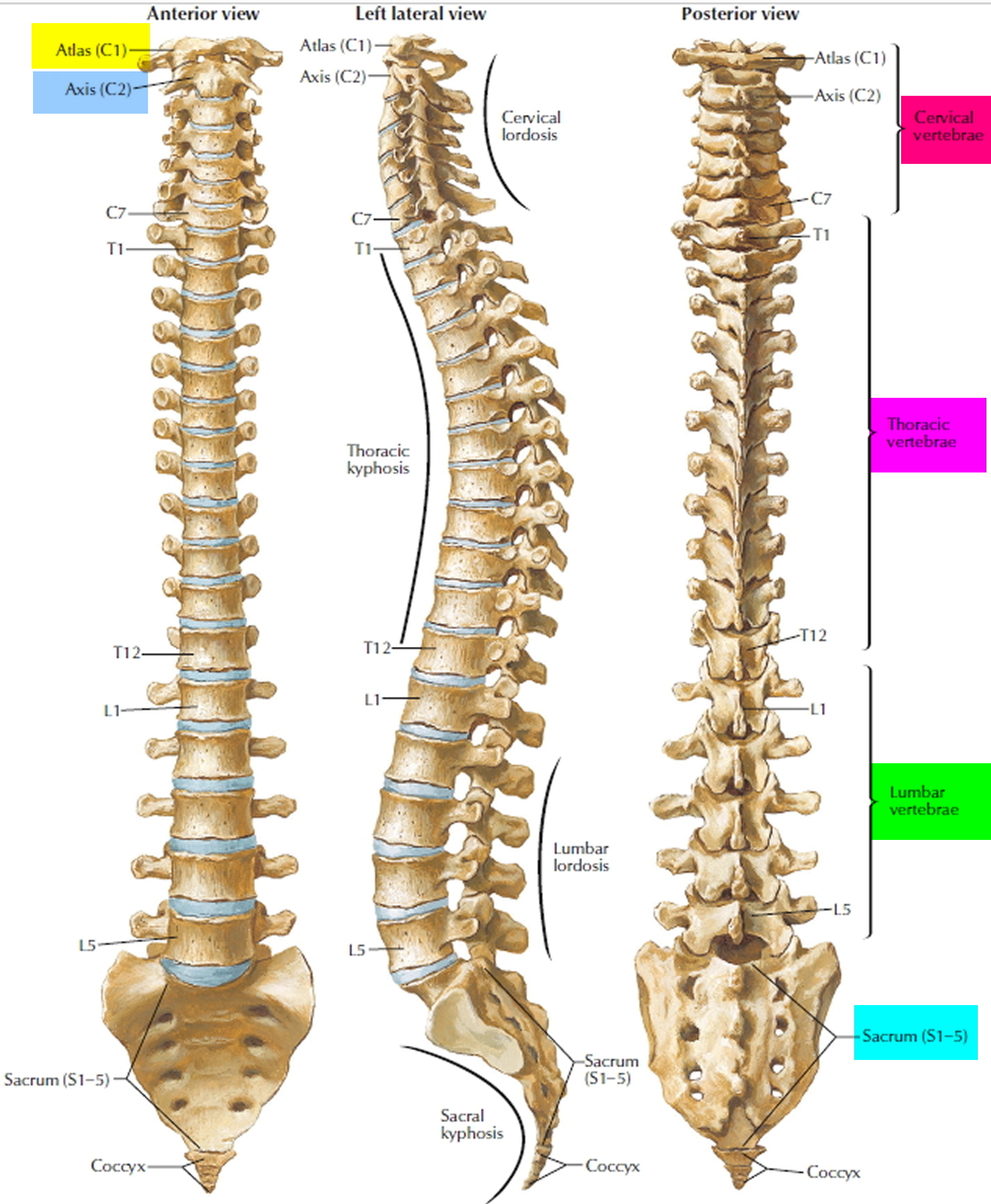
Spinal Cord Anatomy Parts and Spinal Cord Functions
The vertebral column, also known as the spine, is composed of a series of bones called vertebrae, which are stacked one upon another and interconnected by cartilaginous intervertebral discs to form a column. It forms the skeleton of the neck and back and is divided into five regions based on structure and location of the vertebrae. The alignment of the vertebrae within the vertebral column.
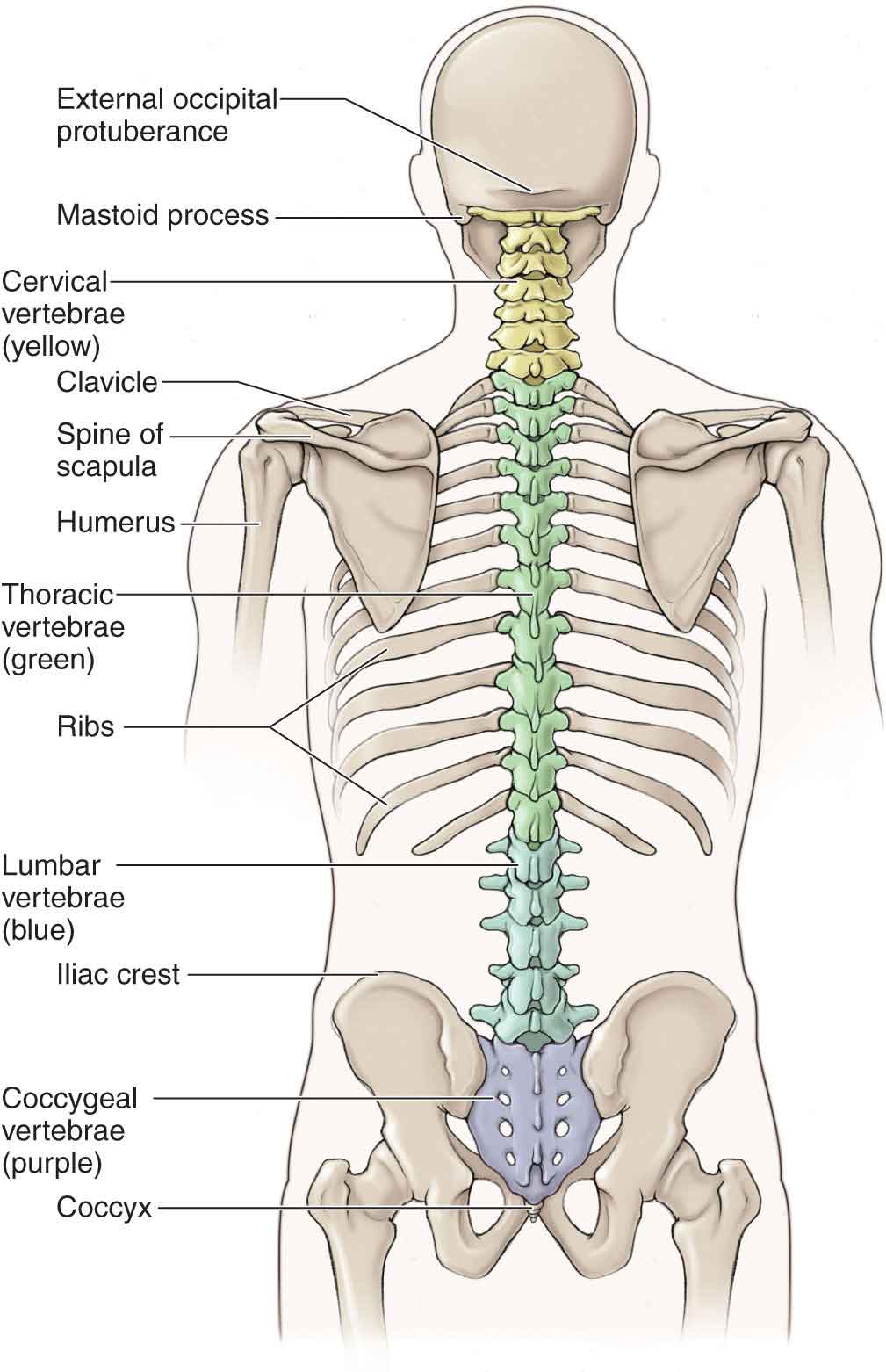
the human vertebral column labeled
Two transverse processes Well-Labelled Diagram of all the Vertebrae in a Vertebral Column Cervical Vertebrae Cervical vertebrae are the first region in the vertebral column and are located just below the skull. The cervical vertebrae are denoted as C1 to C7, C1 being closest to the skull and C7 being farther away towards the spine.

Normal Anatomy of the Human Vertebral Column Compel Visuals
Spinal anatomy. Products and services. The spine (vertebral column) of a typical adult is composed of 32 vertebrae divided into five sections. Share. Tweet. Advertisement. Mayo Clinic does not endorse companies or products. Advertising revenue supports our not-for-profit mission. Advertising & Sponsorship.

Spinal Anatomy Spinal Regions Bones and Discs Vertebrae Spinal Cord
Vertebrae labeling is based on the analysis of the intensity profile along the spine. Depending on the contrast (T 1 - or T 2-weighted), generic profile shapes are used to identify disks from their intensity profile. An original feature of this algorithm is the use of a template of human vertebral distances to increase the robustness of disk.
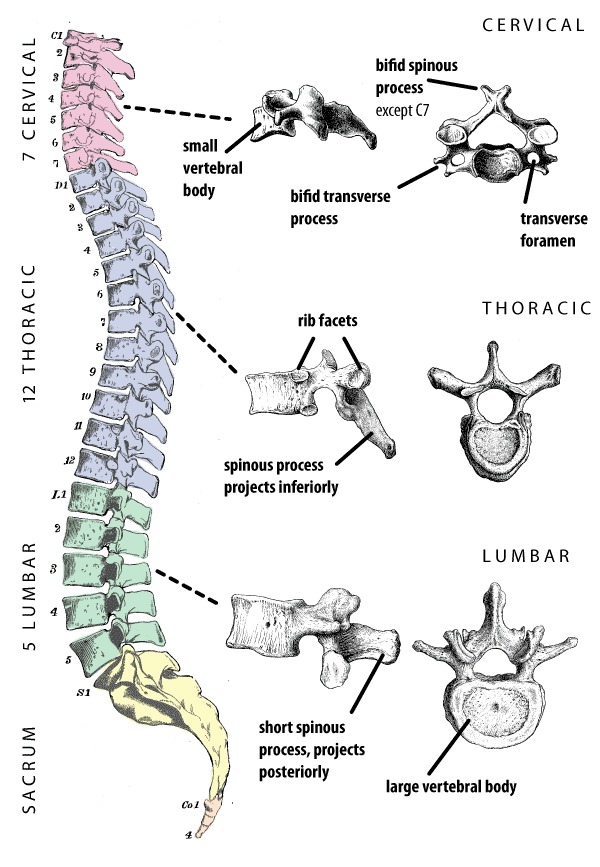
The different types of vertebrae in the human spine
What is the Vertebral Column The vertebral column, commonly known as the spine, spinal column, or backbone, is a flexible hollow structure through which the spinal cord runs. It comprises 33 small bones called vertebrae, which remain separated by cartilaginous intervertebral discs.

Bones Biological Sciences 341 with Farone at Grove City College StudyBlue
The five different regions are shown and labelled. Structure of a Vertebrae All vertebrae share a basic common structure . They each consist of an anterior vertebral body, and a posterior vertebral arch. Vertebral Body The vertebral body forms the anterior part of each vertebrae.

The Vertebral Column Joints Vertebrae Vertebral Structure
The vertebral column (spine or backbone) is a curved structure composed of bony vertebrae that are interconnected by cartilaginous intervertebral discs. It is part of the axial skeleton and extends from the base of the skull to the tip of the coccyx. The spinal cord runs through its center.